Xishuangbanna Tropical Botanical Garden (XBG), Chinese Academy of Sciences, is located in Menglun Town, Xishuangbanna Dai Autonomous Prefecture, Yunnan Province. It sits on a gourd-shaped peninsula surrounded by the Luosuo River, a tributary of the Lancang River. As a national 5A-level tourist attraction, it is the largest comprehensive botanical garden in China. Covering an area of approximately 1,125 hectares (about 16,875 mu), the garden preserves over 13,000 species of tropical plants and includes more than 50 specialized plant gardens. Among them, the Palm Garden, Banyan Garden, and Victoria Water Lily Pond are core exhibition areas. With an altitude of 570 meters and an average annual temperature of 21.4°C, the garden features various ecosystems such as tropical rainforests, monsoon forests, and tropical savannas, serving as a crucial base for the preservation and research of tropical plant resources in China.
Historical Culture
Founded in 1959 under the leadership of the renowned botanist Professor Cai Xitao, the garden initially focused on researching economic plants like rubber trees. Later, it gradually developed into a comprehensive park integrating scientific research, popular science, and tourism. In the early stage of its establishment, the research team overcame harsh conditions in the tropical rainforest area and introduced and preserved a large number of rare plants, such as the Parashorea chinensis and Vatica xishuangbannaensis, which are national first-class protected plants. Since 1980, the garden has been open to the public and has become one of China's first popular science education bases.
The garden retains the former site of the scientific research workstation from the 1950s, displaying specimen collection tools and laboratory equipment used by early researchers, which serves as a material witness to the history of tropical plant research in China. In addition, the garden has collaborated with local Dai villages to establish a "Plants and Ethnic Culture" exhibition area, systematically introducing the Dai people's traditional knowledge of using plants in medicine, architecture, and diet—for example, making palm-leaf scriptures from Corypha umbraculifera and Buddhist banners from Bombax ceiba.
Major Attractions
Victoria Water Lily Pond
As one of the most representative attractions in the garden, the Victoria Water Lily Pond covers an area of about 2 hectares and cultivates species such as Victoria cruziana and Victoria amazonica. The leaves of Victoria water lilies can reach a diameter of over 3 meters and have a maximum load-bearing capacity of approximately 70 kilograms. From August to October each year, they enter the full blooming period, with flowers gradually changing color from white to pink and each flower blooming for only 3 days. A waterfront boardwalk is built around the pond, allowing visitors to observe the leaf structure and insect pollination process up close.
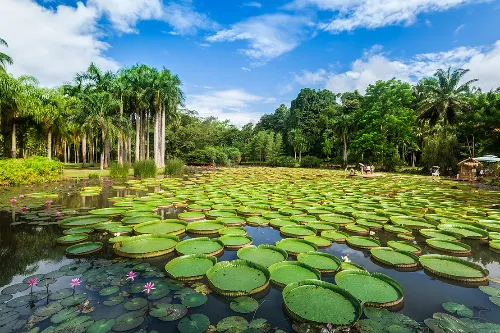
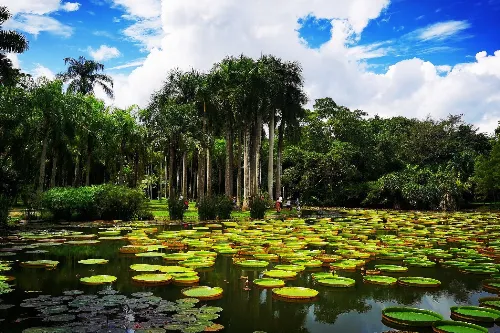
Tropical Rainforest Ethnic Culture Museum
With a construction area of 3,000 square meters, the museum is divided into the Plant Science Hall and the Ethnic Culture Hall. The Plant Science Hall showcases the evolutionary history of tropical plants and specimens of endangered species, among which the fossil specimen of Caryota urens with a tree age of over 100 years is particularly precious. The Ethnic Culture Hall exhibits production and daily life tools related to plants used by 13 indigenous ethnic groups including the Dai and Hani peoples, such as bamboo water mills and bark cloth-making tools, with a total of more than 800 exhibits on display.
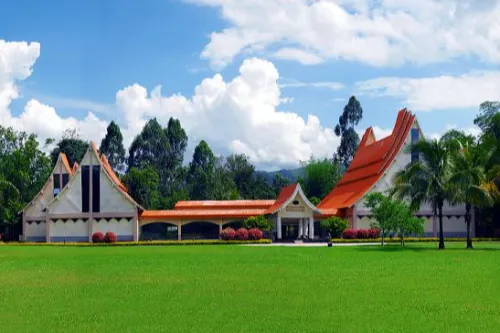
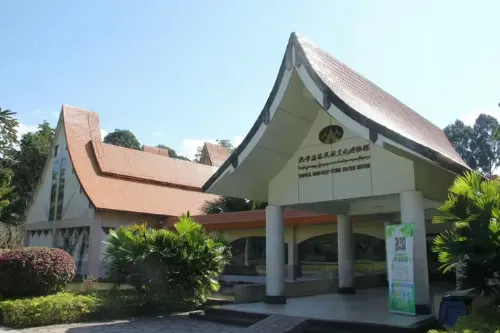
Cassia javanica (Java Sausage Tree)
Cassia javanica, also known as Java senna or pink orchid tree, has a broad, umbrella-shaped crown with dense green leaves. During its full blooming period, the tree is covered with pink flowers that hang down gently along its long branches, creating a beautiful and romantic scene.
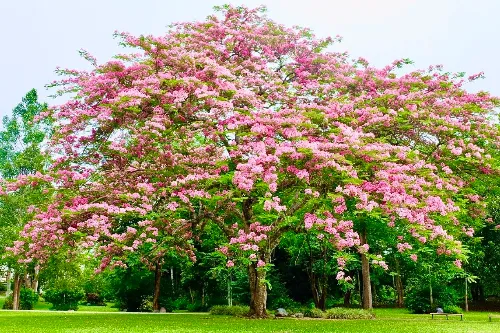
Chinese Fan Palm Boulevard
The Chinese fan palms (Livistona chinensis) on both sides of the boulevard are tall and straight, with large fan-shaped leaves. This is the only road in Xishuangbanna Tropical Botanical Garden lined with neat street trees.
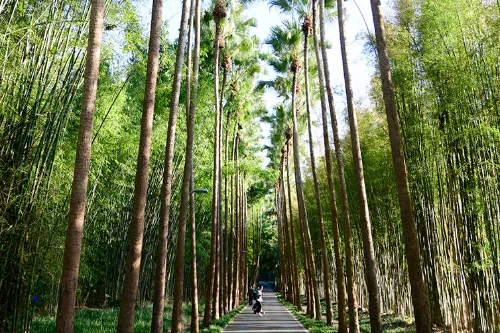
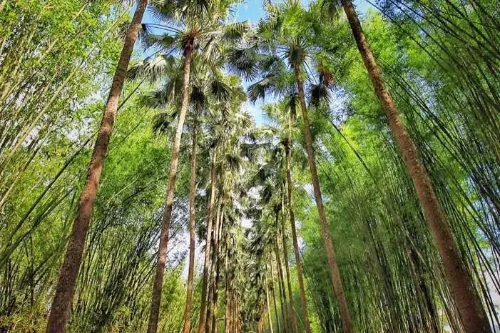
Garden of Rare Flowers and Exotic Plants
Covering an area of 5 hectares, this garden collects and displays over 300 species of exotic plants, such as Codariocalyx motorius (dancing grass) that "dances", Nepenthes (pitcher plants) that catch insects, and Amorphophallus paeoniifolius that emits a rotten meat smell when blooming. Among them, the "miracle fruit" (Synsepalum dulcificum) can make sour foods taste sweet to those who eat it within an hour, making it a popular item for popular science interaction. The garden also has a scent experience area where visitors can smell the natural fragrances of plants like lemongrass and citronella.
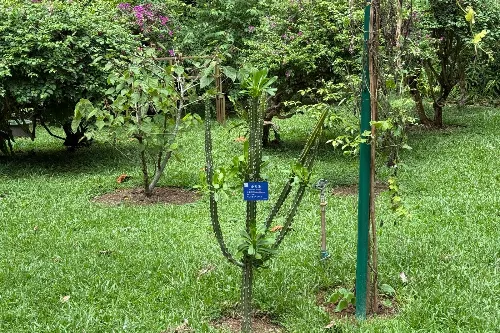
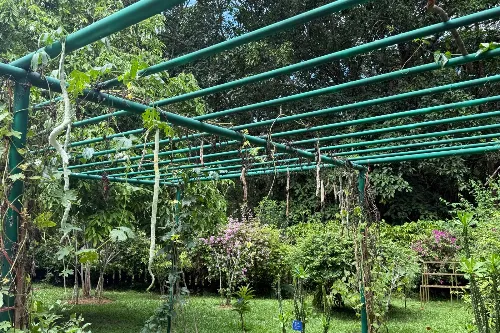
Strangler Fig
Strangulation is a common ecological phenomenon in tropical rainforests. In the valley rainforest of the garden, there is a centuries-old strangler fig whose host tree has been strangled, leaving only a hollow space that can accommodate several adults standing inside, offering visitors a unique close-up experience.
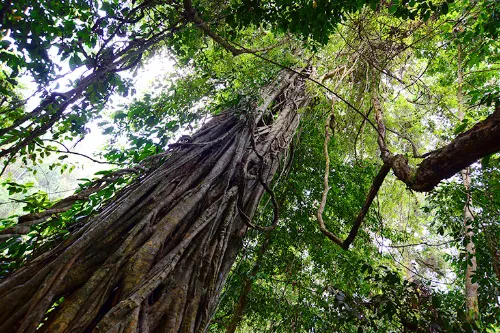
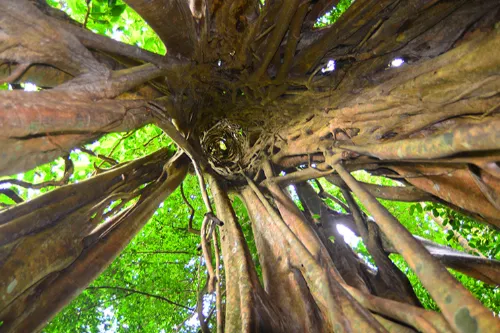
Vine Waterfall
Vines grow in a tangled manner, resembling a waterfall.
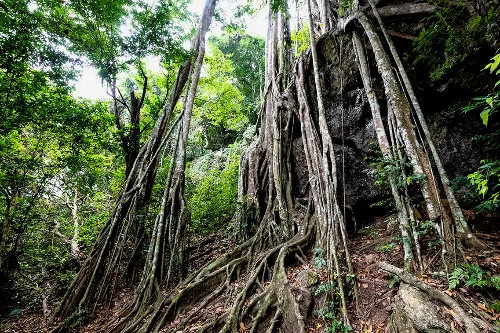
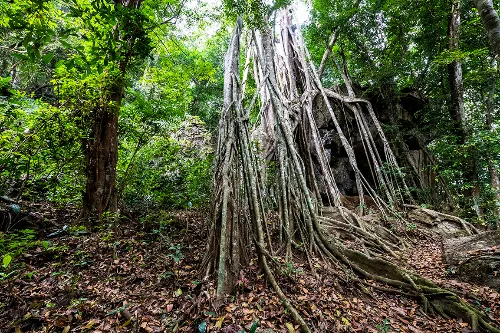
Hundred-Flower Garden
In the Hundred-Flower Garden, clusters of Caesalpinia pulcherrima and Mussaenda philippica are dazzling—bright red and vivid yellow. Although there are no autumn-colored leaves, the garden presents a spectacular scene of "layers of forests dyed in rich hues".
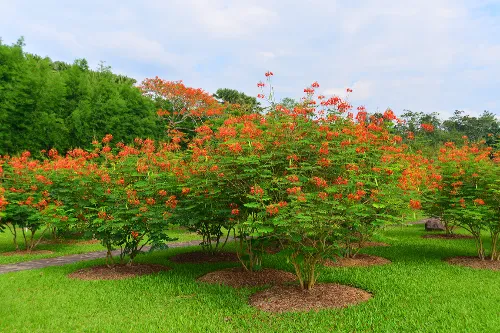
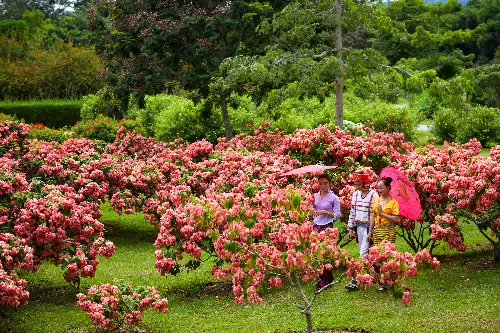
Recommended Tour Route
Recommended Route: Enter through the West Gate → Take an electric shuttle bus to Victoria Water Lily Pond (15 minutes) → Visit Victoria Water Lily Pond and the surrounding Aquatic Plant Garden (2 hours) → Walk to the Tropical Rainforest Ethnic Culture Museum (10 minutes, passing the Banyan Garden on the way) → Tour the museum (1.5 hours) → Take an electric shuttle bus to the start of the High-Altitude Bird-Watching Boardwalk (20 minutes) → Hike the boardwalk (2 hours, ending at Eagle Viewing Platform) → Take the electric shuttle bus back to the main tourist area → Visit the Garden of Rare Flowers and Exotic Plants (1 hour) → Have lunch at the East Gate Food Street → In the afternoon, freely tour specialized gardens such as the Palm Garden and Orchid Garden (2 hours) → Exit through the West Gate. The entire journey takes approximately 8 hours, with a walking distance of about 5 kilometers.
Travel Tips
- The mosquito density in the garden is relatively high. It is recommended to bring mosquito repellent containing DEET (reapply every 2 hours) and wear long-sleeved shirts and long pants to avoid bites.
- Some sections of the High-Altitude Bird-Watching Boardwalk are narrow. It is advisable to wear non-slip sports shoes. Visitors with acrophobia can choose the ground trail instead.
- During the rainy season (May-October), bring a waterproof jacket. There are 20 rain shelters in the garden; in case of heavy rain, you can take shelter in the nearest science popularization hall.
- To participate in the night tour, prepare a flashlight (available for rent in the garden at 10 yuan per unit). The night tour mainly focuses on observing nocturnal animals such as tree frogs and katydids. It is recommended to book 3 days in advance on the official website.
- When tasting Dai-style barbecued food, you can request to adjust the spiciness level. The spiciness index of Xiaomi peppers reaches 50,000 SHU; for first-time tasters, it is recommended to choose the mild spicy flavor.
Notes
- Picking plants and feeding wild animals are prohibited in the garden. There have been cases where visitors picked the aerial roots of strangler figs, causing damage to the plants. Violators will face a fine of 200-500 yuan.
- There are "No Swimming" signs around the Victoria Water Lily Pond. The water depth reaches 2 meters, and alligator snapping turtles inhabit the pond. There have been multiple incidents of visitors falling into the water after climbing over the guardrails.
- The High-Altitude Bird-Watching Boardwalk is not open at night and entry is prohibited after 18:00. There have been cases where visitors got lost after being stranded on the boardwalk and had to be guided down the mountain by staff.
- Respect the customs of local ethnic minorities. The Dai people's water wells and sacred trees in the garden are sacred sites; littering or climbing is prohibited.
- The last departure time of the electric shuttle bus is 17:30. It is recommended to arrange your time properly to avoid missing the bus and having to walk out of the garden (which takes about 1.5 hours).
Transportation
- Self-driving: Depart from Jinghong Urban Area, drive 38 kilometers south along National Highway G213, then turn onto County Road X310 to reach Menglun Town. The entire journey takes approximately 50 minutes. The garden has 3 large parking lots, with a daily parking fee of 20 yuan for cars.
- Public Transportation: Jinghong Passenger Station operates direct buses to the garden from 07:00 to 18:00 every day, with a frequency of one bus every 30 minutes. The ticket price is 15 yuan, and the journey takes 40 minutes. The last return bus departs at 18:30.
- Scenic Spot Shuttle Bus: Direct shuttle buses to the garden are available from popular areas such as Gaozhuang Xishuangjing and Sunac Resort. The buses depart from 08:00 to 09:00 every day. The round-trip ticket price is 30 yuan, which includes basic tour guide services.
Opening Hours
The garden is open year-round, from 08:00 to 18:00 (entry is stopped at 17:30). Attractions such as the Victoria Water Lily Pond and the Garden of Rare Flowers and Exotic Plants extend their opening hours to 18:30 during the rainy season (May-October). The night tour (19:00-21:00) requires advance booking and is only available on Saturdays, Sundays, and legal holidays.
Ticket Information
Adult Ticket: 80 yuan per person; Sightseeing Bus Ticket: 50 yuan per person.
You can search for the official WeChat public account of the scenic spot "西双版纳热带植物园" to obtain the latest updates or purchase tickets online.
Online Booking
Click here to jump to the Trip.com ticketing platform for ticket purchase.


